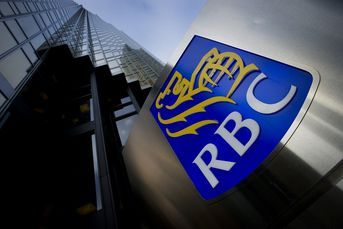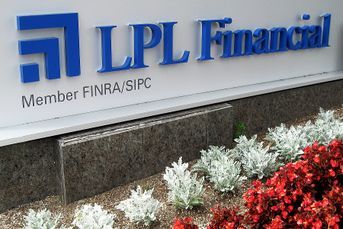Bigger & Better
Scott Hanson has achieved a level of success and fame uncommon among financial advisers. He has a following…
Scott Hanson has achieved a level of success and fame uncommon among financial advisers. He has a following of potential clients on radio and a following of advisers who seek his advice.
Mr. Hanson is also his own biggest critic.

“There’s something that keeps driving me — pushing me forward,” said Mr. Hanson. “Quite frankly, I don’t feel like a successful adviser. I look at other advisers with bigger practices and think, ‘What have I done?’ ”
For all his humility, the founding principal of Sacramento, Calif.-based Hanson McClain Group is part of a growing clique in the wealth management business.
It’s no secret that the independent adviser has risen from being a cottage industry on the margins of professional finance to reframing a debate about how financial advice should be provided.
Along the way, many have achieved a goal they never thought possible: the billion-dollar club.
Growing Giants
Source: InvestmentNews/Moss Adams Practice Management Benchmarking Studies
Twenty percent of registered investment advisers participating in InvestmentNews’ annual benchmarking study of financial advisory firms managed $1 billion or more in assets last year. That number was 2.5% a decade ago.
“Just 10 years ago, people thought it was a big deal to get to $100 million in assets,” said Mark Tibergien, chief executive of Pershing Advisor Solutions. “[But] the rate of growth has been exponential. They crossed the mountains and swam the streams. They had no idea what was on the other side. Now there’s more clarity about what success looks like in this business.”
They have increased revenue by 23% annually since the financial crisis, compared with 15% for all other firms in the study. Their clients have $2.74 million invested with them on average — nearly three times the average for smaller firms. Their overhead accounts for 33% of revenue, compared with 39% for other firms. And their owners earn $841,580 a year, while owners at other firms earn $414,816, according to the study.
Billion dollar attributes
Source: 2014 InvestmentNews Financial Performance Study
Critical Mass
Getting to $1 billion has a number of perks. Advisers can get better pricing from vendors, technology companies and other providers. That was the motivation that drove Robert Mayes, who expanded his BlueCreek Investment Partners to $500 million organically over a decade before merging in January with a $900 million firm, Keel Point.
“You have to be large enough that you’re able to control those conversations and to more influence in terms of providing services that are economically viable,” Mr. Mayes said. “You have to have critical mass.”
The $1 billion number often helps RIAs qualify for practice management consulting services and premium pricing from custodians. It may give them access to their custodian’s senior executives, according to John Furey, who owns Advisor Growth Strategies, a consulting firm.
“Size does matter when you think about firms that are supporting you,” said Mr. Furey. “The simple analogy is that there are value volume discounts, and most custodians do have custom pricing schedules.”
Yet for those firms, a billion dollars isn’t a magic pill. As they’ve grown, key questions have emerged about how to build lasting enterprises and maintain the momentum they need to continue driving growth.
“It’s important, but does it mean that you have accomplished a lasting business? I don’t think so,” said Joe Duran, chief executive of United Capital, based in Newport Beach, Calif. “The idea is that it’s not a finish line, and if it is, you’re not thinking about it the right way.”
As firms get bigger, they often need to strike deals to lower fees for their biggest clients. The amount they spend on professional compensation is nearly 2 percentage points higher than the 37.8% smaller firms pay. And the revenue of the latter is smaller than it was for billion-dollar firms a decade ago — it averaged $9.7 million last year, down from $12 million the decade before, according to the InvestmentNews study.
$5 Billion Threshold
Executives at billion-dollar firms need to be looking ahead to the next threshold, $5 billion, according to Mr. Duran, or they risk languishing at $1.5 billion or even losing their gains.
“If you’re at a billion, the goal should be how to get to $5 billion in assets and $25 million in revenue,” he said. “It’s no different from the person who is sitting there today at $100 million to $200 million and thinking, ‘How do I get to $1 billion?’ ”

Mr. Duran, 47, whose firm has about $13 billion in assets under management, knows from experience the dangers of not planning. He first crossed the $1 billion line at a previous firm in 1998, when he was 31.
“I honestly thought I was king of the universe,” he said. “We had a massive party at the Beverly Hilton Hotel, and then over the next year we lost $600 million in assets.”
Had it been 2008 the firm would have failed, he said. He and his partners realized it couldn’t survive when asset levels fell, partly because of large employee salaries. They couldn’t support those costs.
Many billion-dollar firms have made two or three trips to the mountaintop. They grew to $1 billion before the financial crisis, then watched their businesses struggle and incomes flat line. The bull market helped them find their way back. Others reached the milestone after their first merger or acquisition.
For BlueCreek and Keel Point, which are keeping separate brands, the goal is to grow to $5 billion in the next five years. Mr. Mayes said the firm needs to grow to keep up with the giants vying for the same clients. He aims to add at least one veteran practice every year.
Mr. Duran advises that executives at $1 billion firms will have to completely shift their thought process to get to $5 billion. That means coming up with scalable processes, such as account opening and generating referrals. It also means reorganizing the team and focusing personnel away from travel and meetings, for example, and on business development.
“The people who got you to $1 billion are doers, but the people who get you to $5 billion are thinkers,” he said. “The shift from doing to thinking is a shift that most advisers are very uncomfortable with because they have always equated their value with their action, not with their thought.”
Perhaps most importantly, it means leaving behind your ego, Mr. Duran added, recalling his own humiliation in 1999. That translates into better delegation of responsibilities and replacing high executive salaries with variable compensation.
“They think if they get a nicer car, if their office is bigger, if they have their own workout facility in the office or their own showers, that somehow they’re more worthy,” Mr. Duran said. “I would be talking about what can go wrong and how you can protect yourself against it.”
Challenges Ahead
Serving the wealthy is a difficult task that is not getting any easier.
Mark P. Hurley, a prominent investor in advisory firms and the CEO of the Fiduciary Network, said the most successful firms will be highly specialized.

Among those he’s invested in is an RIA with a niche serving the estranged spouses of tech firm executives. He said the firm developed expertise in the legal issues surrounding divorces, tax planning and the compensation practices of tech firms.
That not only helps them identify issues their clients didn’t know they had but makes getting clients through referrals easier and less expensive, he said.
“Every wealth manager’s biological imperative is to add clients,” Mr. Hurley said. “You’ve got many more guys out there trying to get more clients, and they’ve become very sophisticated about it.”
Not all advisers are up to that challenge, and only a handful will join the club, according to Mr. Hurley.
“They liked when their marketing strategy was looking at their phone and waiting for it to ring, with their business throwing off a lot of cash flow,” he said. “Most of them will fly into the ground. ” ■
Six RIAs That Made It To The Top
Learn more about reprints and licensing for this article.












